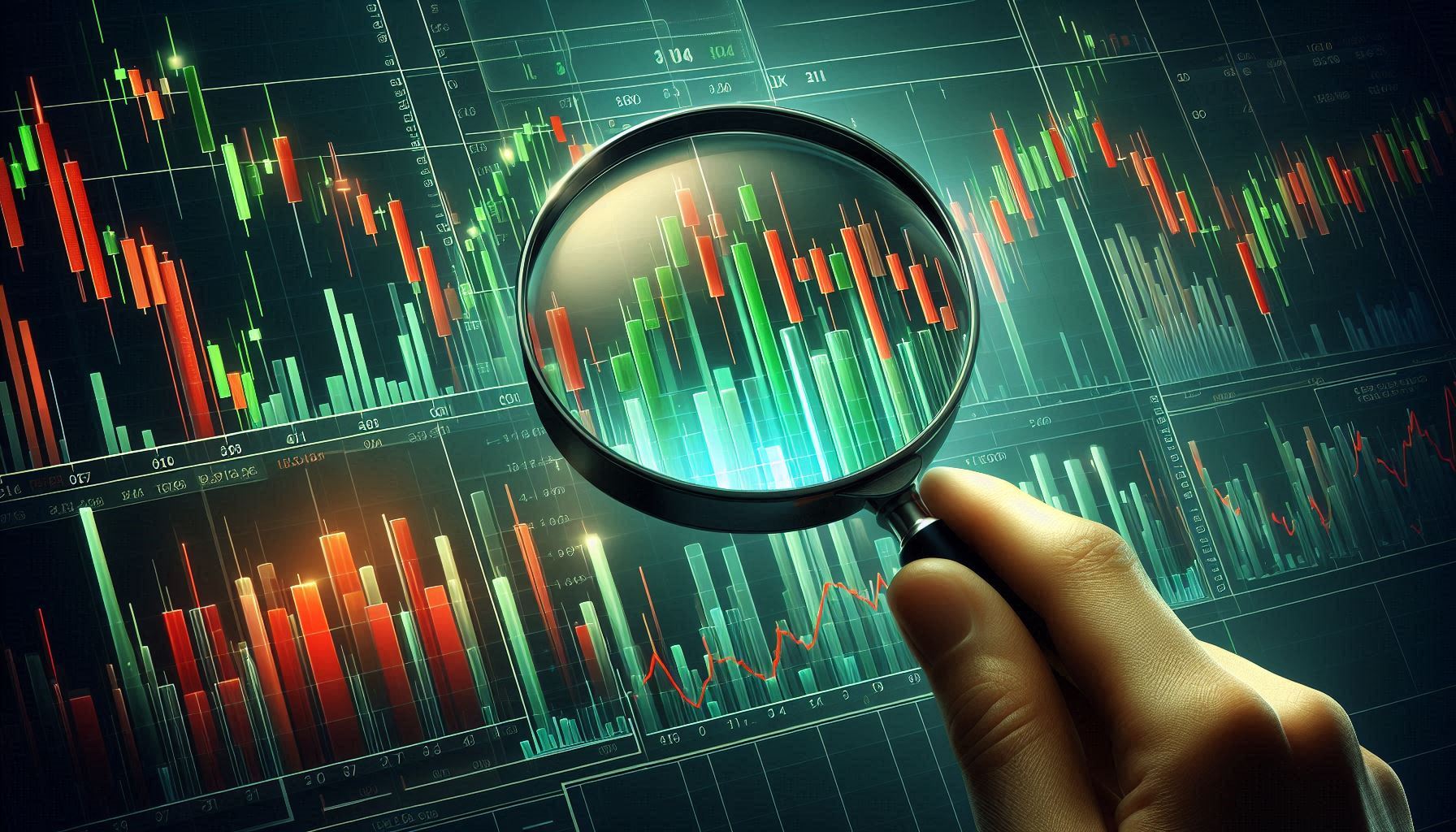
Cryptocurrency trading topped the list recently of investment options in popularity for investors, who use multiple tools in decision-making. This article looks at one of the essential tools that assist cryptocurrency traders: the candlestick chart. Originally, candlestick charts were designed in the 18th century by Japanese rice traders. They have survived centuries and turned out to be one of the most reliable ways to analyze price movements in financial markets, including cryptocurrencies. If you are a new cryptocurrency trader, learning to read these charts will really improve your decision-making process. Well, this article will discuss everything you need to know about reading and interpreting cryptocurrency candlestick charts.
What is a candlestick chart?

A candlestick is a form of financial chart that represents some variation of an asset price over some period. The “candlestick” is simply a way to display the open, close, high, and low prices of the asset being trad, in this case, cryptocurrency, over some period of time. Such graphic information allows traders to establish market sentiment and predict likely future price movements.
The reason why candlestick charts are popular is that they contain more information compared to simple line charts, which only report closing prices. The structure of candlesticks offers depth in terms of giving insights on the psychology of the buyers and sellers for a given period.
Also Read: How to Spot a Rug Pull in Crypto: A Comprehensive Guide
Anatomy of a candlestick
The anatomy of candlesticks should be understood before the interpretation of candlestick patterns. Every candle consists of two main parts:
Body: The body refers to the actual part of the candlestick, usually pointing out a value range between the opening and closing prices. If the closing price is higher than the opening price, then the colour of the body is usually green (or white), indicating that it’s a bullish candlestick. When the closing price is lower than the opening price, then the body is usually red (or black), indicating that it’s a bearish candlestick.
Wicks (or shadows): Thin lines in the path up and down the body of the candle are called wicks or shadows. The upper wick is the highest price since the beginning of the period, and the lower wick is the lowest price for the period. If wicks are small, this means that the price range didn’t stray too far from the opening and closing prices. Long wicks mean that it changed a lot in the time taken.
Single candlestick reading
In its interpretation, one should focus on the body and the wicks of the candle.
Green Candlestick: It would mean that the closing price is better than the opening price and that it has higher buyers dominating the market at this point.
Red Candlestick: This would indicate the sellers pushed the price below the opening price.
Long Upper Wick: This is a long upper wick, indicating that buyers pushed the price up, but sellers reacted to force it down before the close.
Long Lower Wick: This indicates that sellers were trying to push the price down, but the buyers came in and pushed it back before the close.
Time frames in candlestick charts
Candlestick charts can be viewed in many different time frames depending on the strategy of a given trader. Common time frames include:
1 minute: for the intra-minute trading less than a minute.
5 Minutes: as an alternative to short term exchange
1 hour: good for intraday trading
1 Day: main swing trading technique. Most of these traders keep their trades open for some days or some weeks
1 week: best suited for long term investors
While looking at a candlestick chart, you can switch back and forth between these time frames to see short-term and long term patterns.
A simple candlestick pattern

A candlestick pattern occurs when at least one or more consecutive candles form, and their movement may give an indication to traders as to whether a continuation or reversal pattern is about to occur. Let’s examine some of the most recognizable patterns:
-
Doji
A Doji is when the price opens and closes in the almost same value, so the body would be very short or negligible. Wicks are elongated when prices traded way up or down during this time, but neither buyers or sellers can take control. This pattern often represents indecision in the market and signals either a reversal or consolidation phase.
-
Hammer and Reverse Hammer
Hammer: A hammer has a short body and long lower shaft. It typically occurs below a downtrend and is a possible reversal. A long lower wick indicates that sellers forced the price down rather drastically but then buyers came in strong pushing it back up again.
Inverse Hammer: The body of the inverse hammer is short and has a long upper wick and usually appears after a downtrend. This candlestick looks like a hammer and indicates a possible reversal since buyers are starting to get control despite selling pressure.
-
Shooting star
A shooting star is like an inverted hammer but appears after an upward move. It’s a short-bodied candle with a long upper one that shows buyers tried to push the price higher, which got repelled by sellers and sent it back lower. That may have been a bearish reversal.
-
Deep pattern
Bullish Engulfing This is a two-candle pattern. There is first a small bearish candlestick follow by a large bullish candlestick that “engulfs” the previous one. This indicates that buyers may be in control as the pattern might foretell a reversion to the upside.
Bearish engulfing: A small bullish candle is envelop by a big bearish candle-the opposite condition to the one described above-and implies that sellers have taken control and a bearish reversal is likely to occur. A sign of this.
-
The morning star and the evening star
Morning Star: This comprises three candles. The first is bearish, then a small, undecided candlestick like a doji, and then a pretty large bullish candlestick. It’s a possible bullish reversal at the end of a downtrend.
Evening Star: An evening star is a formation that represents the opposite of the morning star. It consists of a bullish candlestick, a small indecisive candlestick, and a large bearish candlestick. This formation may mark a potential bearish reversal following an uptrend.
Trend in candlestick chart
In addition to identifying specific formations, users of candlestick charts assess the trends.
This consists of a series of consecutive higher highs and higher lows, usually represented in a string of bullish candles. The kind of area the pullback comes in during an uptrend is what traders aim to find, as these are entry points.
This has lower lows and lower highs. A downtrend is usually represent in a string of bearish candlesticks. The trader may find some short rallies, which are short uptrends within downtrends, to enter their short positions.
Sideways Trend: Also known as a consolidation trend, this is a trend in which the price moves in a tight range without a sharp direction. Typically, the position is taken after waiting for a breakout from the consolidation stage.
Using Candlestick Patterns in Crypto Trades
Candlesticks must not be used solely in the resolution of trade decisions. Signals obtained should be confirm with other forms of technical analysis, such as moving averages, volume indicators, and trendlines for higher efficiency in precision and confirmation.
For instance, if you see the bullish reversal pattern, it would be wise to check whether the price touches the area of the supportive level and, above all, whether the trading volume is strong enough to validate the strength of the buyers. In general, in case you caught a hammer at the end of a downtrend, that would mean the appearance of a possible reversal signal; paired with the RSI, this would make you feel even safer.
Also Read: Tech Company CEO Arrested in $366 Million Crypto Scam: Unraveling the Web of Deception
The result
Thus, reading cryptocurrency candlestick charts must be an important skill for every serious crypto trader. You will understand candlestick anatomy and discover major patterns better in order to be more accurate in predicting the price movements and, therefore, making decisions for your trades. But what is true for every trading tool: candlestick charts are not infallible. They work at their best when used together with other technical indicators and proper risk management.
The markets are extremely volatile in the case of cryptocurrency, and analysis through candlesticks can be helpful, but one really needs to rethink his approach and market trends all the time to successfully traverse this fast-paced arena. Keep up with the trends.







